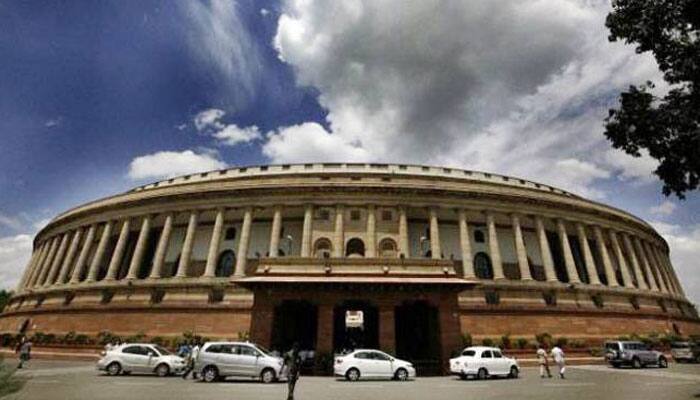New Delhi: India faces the risk of deflationary impulses owing to stressed agricultural revenues, bad loans, farm loan waivers and the fiscal tightening they would entail, that could push inflation below the Reserve Bank of India`s (RBI) targeted 4 per cent by March 2018, according to the Economic Survey 2016-17 Volume-2.
Following are the highlights of Part-2 of Economic Survey 2016-17, tabled in Parliament today:
* Difficult to achieve upper end of 6.75-7.5 per cent real GDP growth predicted in January.
* Fiscal deficit expected to decline to 3.2% of GDP in 2017-18, compared with 3.5% in 2016-17.
* Retail inflation likely to remain below 4% by March.
* Fiscal outlook for 2017-18 is uncertain.
* Considerable scope for monetary policy easing; Repo Rate 25-75 basis points above neutral rate.
* Structural reform agenda includes implementing GST, Air India privatisation, rationalising energy subsidies, addressing twin balance sheet challenge facing banks.
* Early signs of tax base expanding post implementation of the Goods and Services Tax (GST).
* Nominal GDP growth accelerated post demonetisation; 5.4 lakh new tax payers post note ban.
* Demonetisation may continue to pay dividends over time.
* Farm loan waiver could cut economy demand by up to 0.7% of GDP; State farm loan waivers could touch Rs 2.7 lakh crore.
* Stock limits, movement curbs on farm goods need to end.
* Credit off-take from banks continued to decelerate.
* Private banks' loan growth more robust than of PSU banks.
* House rent allowance may push inflation by 40-100 bps.
* Economy lags dynamism to push inflation towards 4%.
* Geopolitics not as big a risk for oil prices as before.
* Gross non-performing advances (GNPAs) ratio of Scheduled Commercial Banks (SCBs) rose from 9.2 per cent in September 2016 to 9.5 per cent in March 2017.
* India targets to lower the emissions intensity of GDP by 33-35 percent by 2030; will raise share of non-fossil fuel based power generation capacity to 40 per cent.
* Urgent need to increase access of the poor to more efficient energy resources.
* Current account deficit (CAD) down to 0.7% of GDP in 2016-17 from 1.1% in 2015-16.
* Gross FDI inflows to India increased significantly to USD 60.2 billion in 2016-17 from USD 55.6 billion in 2015-16.
* Net FDI inflows at USD 35.6 billion as opposed to USD 36 billion in 2015-16.
* India's forex reserves of USD 386.4 billion second largest after Brazil among major economies.
* Green shoots on trade horizon; world trade growth projected at 3.8% and 3.9% in 2017 and 2018.
* India's trade growth picking up.
* Deterioration in quality learning in primary education,
* Targeted enrolment in middle education a challenge.
* Employment poses great challenge in structure dominated by informal, unorganised and seasonal workers.
* High levels of under-employment, skill shortages.
* Labour market impacted by rigid laws and emergence of contract labour.
















